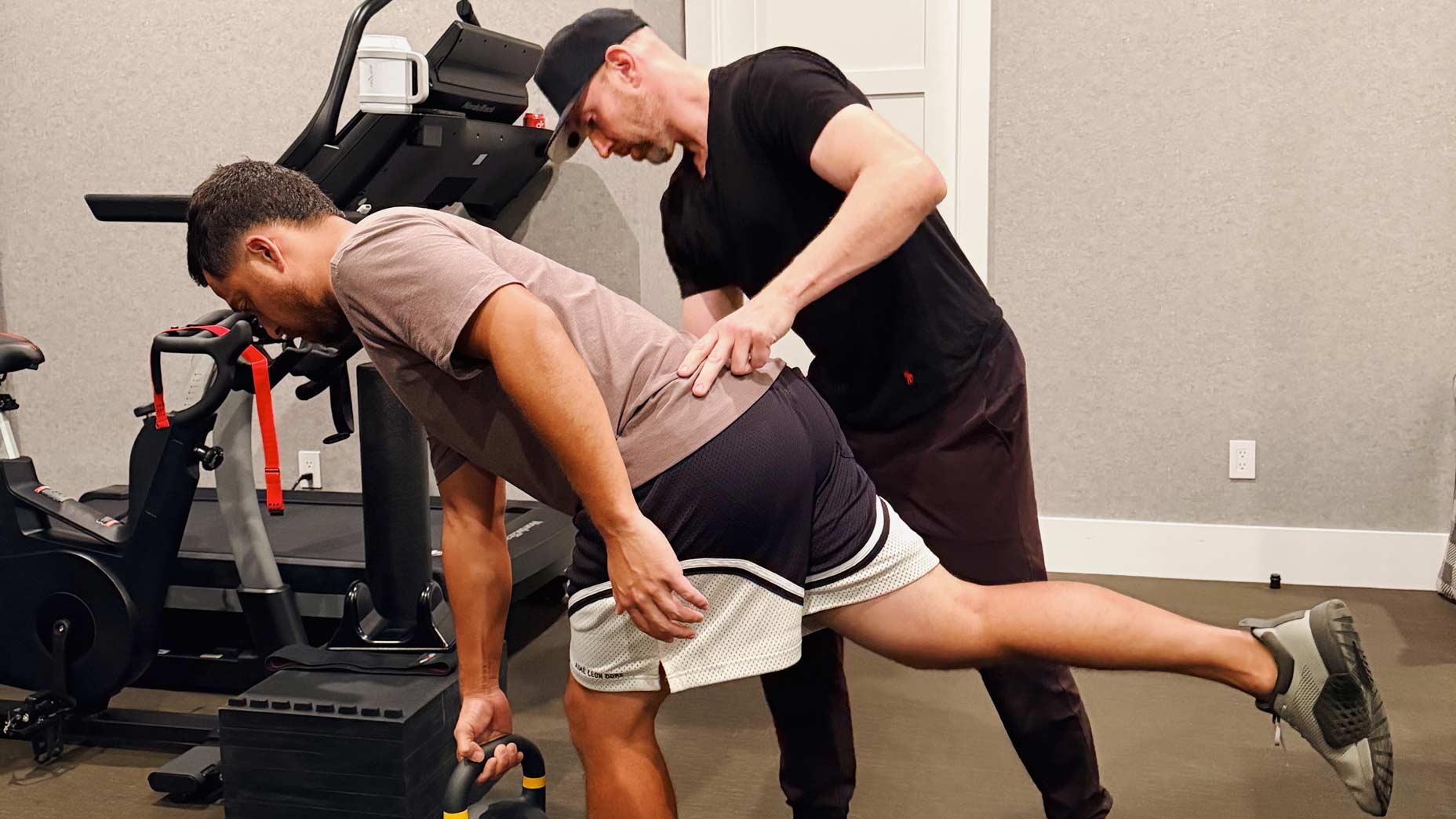Whether your full swing is in tatters or firing on all cylinders, your putter will either sink you or save you. Let’s try for the save. Step one: Hit 15 fewer practice balls on the range and use the time to roll putts on the practice green. Your goal? Get a feel for the speed of the greens. There’s not enough time to work out every kink in your stroke. That can come later. With your tee time looming, however, honing your speed sensors will help ensure you’re always around the hole, eliminating three-putts. Here’s what to do.
Step 1: When checking in with the pro shop, ask if the practice greens are running at the same speed as the greens on the course. Depending on where you play, there could be a massive difference. In the event of a discrepancy, limit your warm-up to working on your putting posture (Step 2, below) and holing two-footers, using the image of the ball dropping into the back of the cup to build confidence.
If the speeds match, then follow all of the steps below. It’ll take you 15 minutes at most. Before you make a single stoke, however, take a quick walk on the green and get a tactile feel for speed using your feet. If, while you trod, you can feel the ground “give” underneath your spikes, then get into a “slow-speed” mind-set; hit every putt with the goal of getting it past the hole. If the green feels firm, or gives very little under your weight, get into a “fast-speed” frame of mind, and think about “dying” putts at the hole.
Step 2: Find a flat, straight putt on the practice green. Plop a ball on the ground and set your feet. While standing erect, tuck your elbows into the sides of your torso and hold the putter straight out in front of you so that it’s parallel with the ground. Slowly bend forward from your hip joints without moving your elbows or hands until the putter is soled on the ground behind the ball. Next, bring the putter up to your eyes—it should dangle directly over the ball. If it doesn’t, your eyes are either too far inside or outside the target line, which will cause problems when you make your stroke. Adjust your distance from the ball until the putter—and your eyes—are on top of the target line. Get a feel for this posture, and take it to the course.
Step 3: Drop five balls in the center of the practice green and putt one of them to the fringe. Whatever direction you decide is okay. Roll the remaining four as close to the first as possible. Repeat the drill, this time putting from the fringe to the center of the green. Notice you’re not being asked to “aim” at anything in this drill. The goal is to re-create the same speed from putt to putt. Run through the cycle a few times, choosing a mix of longer and shorter distances. I learned this drill from Jack Nicklaus when I was running his instruction academies in Australia. It’s the best pre-round putting warm-up around. Take it from Jack.
Step 4: Drop five balls in a circle three feet from a cup. Go around the circle and try to hole each one—but do it while looking at the hole (I call this the “Jordan Spieth Drill”). Putting while looking at the hole matches what your eyes see to the force you apply to the putter to roll the ball specific distances. Works like magic. After putting five balls while looking at the hole, re-set the balls, and can them using your normal method. Repeat from five feet.
Your speed senses are firing and you’re ready for anything the greens throw at you. Favor pace over aim when you’re on the course—proper speed and a hot flatstick will carry the day.
GOLF Top 100 Teacher Scott Munroe is the teaching professional at Nantucket (Mass.) Golf Club.






